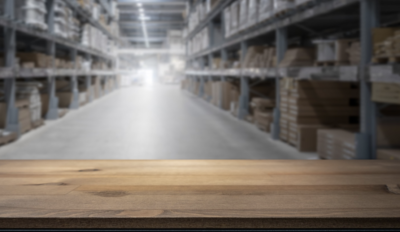
A bad warehouse layout will make your workers’ lives a lot harder.
Designing a warehouse isn’t easy by any means, but you really can’t just go headlong into a project like this without understanding how your workers move around and operate within the space. This might mean that you’ve got to consult a warehouse expert or talk to your warehouse manager to get it done right.
Your warehouse and the people working in it are the heart of your company, so you need to do right by them. In this post, we’re going to give you five tips for making that happen. Here’s how you design your company’s warehouse.
1. Create a Map
To start planning a new warehouse or analyze an existing one, you’ve got to create a map so that you can move things around on paper first. Make note of dock doors, height restrictions, columns, immoveable equipment, and office areas.
Once you’ve got the map drawn, you can start marking it up with operational locations. Doing this allows you to look at the current workflow and then determine how you can improve things like efficiency and safety.
2. No Wasted Space
The accumulation of stock is going to happen in any warehouse, but if you’re going to help your workers out, you need to ensure that the right stock is in the right areas. Things have a tendency to pile up in spots that end up being inconvenient for some, if not all of your workers.
You don’t want random stuff taking up valuable space, so go through and sort out what you need and what can be stashed away. Make it a daily procedure to clean and organize the warehouse, so that your workers will be able to make note of which organizational tactics are working and which ones aren’t.
3. Warehouse Management System
Introduce a warehouse management system (WMS) to help you track inventory and operational data. In many cases, what seems like the logical method of organizing and operating a warehouse is actually inefficient. Every distinct warehouse should be optimized in a way that makes sense for that company.
Changing how you slot your items might bring about a noticeable improvement in the efficiency of order picking.
4. Ensuring Safety
Your layout should be conducive to your workers’ health and overall safety. If you have workers going back and forth between shelves and forklifts, the chances of a slip and fall or something worse will increase.
Installing an industrial floor coating, keeping lanes clean, and keeping forklifts away from loading docks are a few examples of the measures that you can take to ensure safety.
5. Consult Workers
No one will understand the efficiency and safety of your warehouse better than the people that are working within it every day. Don’t be afraid to consult your workers on these matters.
Not only will it help you improve your workflow, but your workers will feel like they’ve had some input on how their work is being done.
Tinker With Your Warehouse Layout
A warehouse layout never has to be permanent. You can try something out and if, after a few months, you realize that it’s not working, you can try something else. Tinkering with the layout too much might annoy your workers, so keep working from a map and use a WMS to figure out the best way to do things.
Did you find this article helpful? Come back and visit True Activist to read more about work, life, health, and politics.


